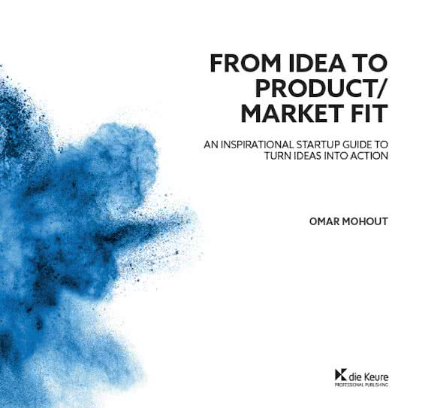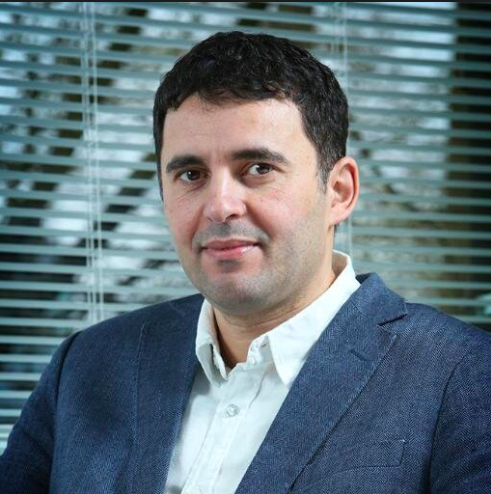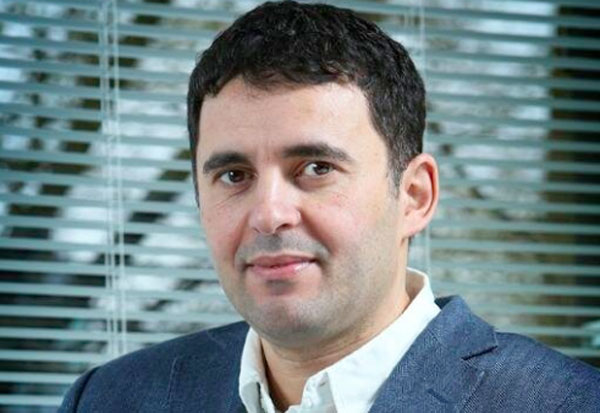 No Belgian academic has obtained as much insight into the challenges faced by Belgian (and by extension: European) startups as Omar Mohout. Omar is (among many other things) Professor of Enterprise at the Antwerp Management School and the Solvay Brussels School of Economics and Management. Recently he authored a new book, From Idea to Product / Market Fit. Omar was kind enough to make time for us to talk about startups, the Belgian startup ecosystem and making it in the United States.
No Belgian academic has obtained as much insight into the challenges faced by Belgian (and by extension: European) startups as Omar Mohout. Omar is (among many other things) Professor of Enterprise at the Antwerp Management School and the Solvay Brussels School of Economics and Management. Recently he authored a new book, From Idea to Product / Market Fit. Omar was kind enough to make time for us to talk about startups, the Belgian startup ecosystem and making it in the United States.
JD: In your book, From Idea to Product / Market Fit, you talk about the four phases of the startup lifecycle: ideation (we want to solve this problem!), problem / solution fit (validation of the solution by the first customers), solution / market fit (there is a real market for your product) and, last but not least, scaling. In which phase do things tend go wrong most often for Belgian startups?
OM: Without a doubt in the last phase, when they need to scale. The Belgian capital market is a very limited one. Each year about 50 startups manage to raise one million euro or more in Belgium. And let me be clear, one million euro is not a large sum for a company that wants to grow internationally. Many startups fail to find the funding they need in order to scale, even if they managed to do very well in the preceding three phases.

Omar Mohout: ‘Look for problems that are both frequent and intense.’
JD: You write that startups need to focus on problems that are both frequent and intense. You mention the ‘shark bite problem,’ which should be left untouched because it might be intense, but occurs infrequently enough for people to want to spend money on it. And then there is the ‘mosquito problem,’ which occurs regularly, but each time it does occur, the level of intensity is too weak to warrant a substantial expense. This brings us to the question: which Belgian startups have recently excelled in identifying a problem that was both intense and frequent?
OM: In the B2B market I would like to mention Aproplan, a company of which I happen to be a Board Member. Aproplan recently made the headlines in the international tech press with news on a substantial new funding round. The company has developed a solution that automates a great many project management tasks in the construction sector. A large number of companies in that industry are still behind when it comes to automation, which means that they spend a small fortune on overhead labor.
An example in the B2C sector is EYEco eyeCO that has developed a revolutionary pair of digital glasses for people who suffer from presbyopia (age-related farsightedness). The condition is a scourge to the elderly. With the post-WW2 generation (Baby Boomers in the U.S.) entering retirement, we are dealing with a huge potential market.
JD: What is it that Belgian startup companies do so much better today than they did a decade earlier?
OM: It is not that entrepreneurs who today take on the adventure of launching a startup are necessarily more gifted than the ones that preceded them. There is one big difference that works in their favor however: We have successfully built a solid ecosystem for startups in this country. Belgian entrepreneurs no longer need to reinvent the wheel whenever they embark on a new endeavor. There is a collectively-shared and growing reservoir of knowledge that all entrepreneurs can tap into, often at a very limited cost. My own book is meant to be a modest contribution to the knowledge base, next to a vast amount of workshops, courses, webinars, networking events and the like that take place every week, spread over the country.
JD: When do you recommend a Belgian startup to give the American market a try?
OM: As soon as the product or service is ready to be launched. The American market is so vast and has so much potential for European companies that I really do not understand why there are still so many Belgian companies that are content with a staying within 100 km from the garage or attic where it all began.
JD: They will tell you that they lack the proper funds to conquer a part of the American market.
OM: They are sadly mistaken. For the budget of a launch in just one of our neighboring countries, you can target a small geographic or socio-demographic segment of the American market. If you do well in that segment, which is to say if you can realize the product / market, you will be able to scale into a large market that is open to startup technology. You will then have a better chance at finding American investors who can help fuel further American growth.
JD: Where ambition is concerned, Belgian entrepreneurs still have a lot to learn from their American counterparts, no?
OM: They do, but Belgians simply see things much smaller than Americans do. It is written in our DNA. Remember how proud we all were, and rightly so, when Materialise raised $100 million through its IPO a couple of years ago. A Fleming will raise a glass of champagne on that. An American will regret not raising a $ 1 billion.
JD: By way of conclusion, a question on pricing. I read that you are no fan of free trials. Why is that? Are free trials not a boon to conversion?
OM: A free demo is a first sight a conversion tool, but looks can be deceiving and resorting to free trials is a shortsighted growth strategy. Free trials make for customers who churn and those customers do not generate a cent of revenue. A customer who has committed once is much more likely to make a second payment.
JD: You’re implying we need to apply the persuasion techniques of Robert Cialdini.
OM: Absolutely. The commitment and consistency principle needs to lead marketers throughout the sales funnel. The first payment serves as an anchor for future consistent behavior, which in marketing parlance means
brand loyalty.
From Idea to Product / Market Fit can be ordered online from the publisher.

